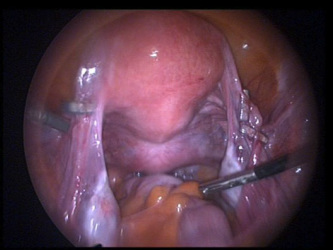
It is the commonest method of permanent sterilization worldwide
It is only for women who have completed their families and are sure they do not want to have any more children.
Before being sterilized women need to be sure that they want a permanent potentially non-reversible method of contraception, and have explored alternative methods of contraception.
Alternative methods include
1. The Mirena IUS. This method is as effective as being sterilized and it has the added advantage that it can be removed if and when pregnancy is desired.
a. There is a small but negligible risk of pelvic infection. If this happens it usually does so within the first 10 days of insertion.
b. And if there is no infection within this time it is unlikely to occur in women are in a monogamous relationship.
c. Partners also have to be in a monogamous relationship.
2. Implants. An example of this is Implanon. This is also an effective method of contraception. It is inserted in the upper inner arm under local anaesthetic
3. Depot injections
4. Contraceptive pills
5. Vasectomy: it is important that there is a discussion with partners as male sterilization is a very effective way of sterilization in a monogamous relationship.
a. comparing laparoscopic sterilisation to vasectomy, with a vasectomy
i. Complications are 20 times less
ii. General anaesthetic is not required
iii. It costs about a third less to have a vasectomy
iv. It is less likely to fail than a sterilization (10-37% less likely)
Having explored these other options women may still opt to be sterilized.
The advantages over other methods would include
1. It requires no motivation and women don’t need to remember to take pills
2. It is permanent
3. Compared to barrier methods of contraception you don’t have to reach for contraception before the event, so intercourse remains spontaneous
4. Once done it doesn’t need to be replaced at intervals
There are however some disadvantages and drawbacks. These include
1. The risk of failure which is put at about 1:250
2. The risk of ectopic pregnancy
3. It is potentially irreversible
a. It is reversible but in the UK the reversing procedure is not available on the NHS
Sterilization is not a procedure that should be taken lightly as it may be associated with regret.
Regret is more common
1. In young women under the age of 30
2. Women who have no children
3. Women who are not in a stable relationship
4. Women who are put under pressure to be sterilized
The procedure of sterilization involves a general anaesthetic and a laparoscopy. Clips are used to obstruct the tubes It is done as a day case so expect to go home the same day.
Sterilization does not affect menstrual periods
Sterilization does not affect sex drive
The clips do not show up on airport x-rays
Other than a laparoscopic procedure it is now possible to be sterilized without the need of a laparoscope, without an anaesthetic. This is known as Hysteroscopic sterilization. During this procedure surgeons insert a titanium coil into each tube through the vagina into the uterus and into the fallopian tubes








 RSS Feed
RSS Feed